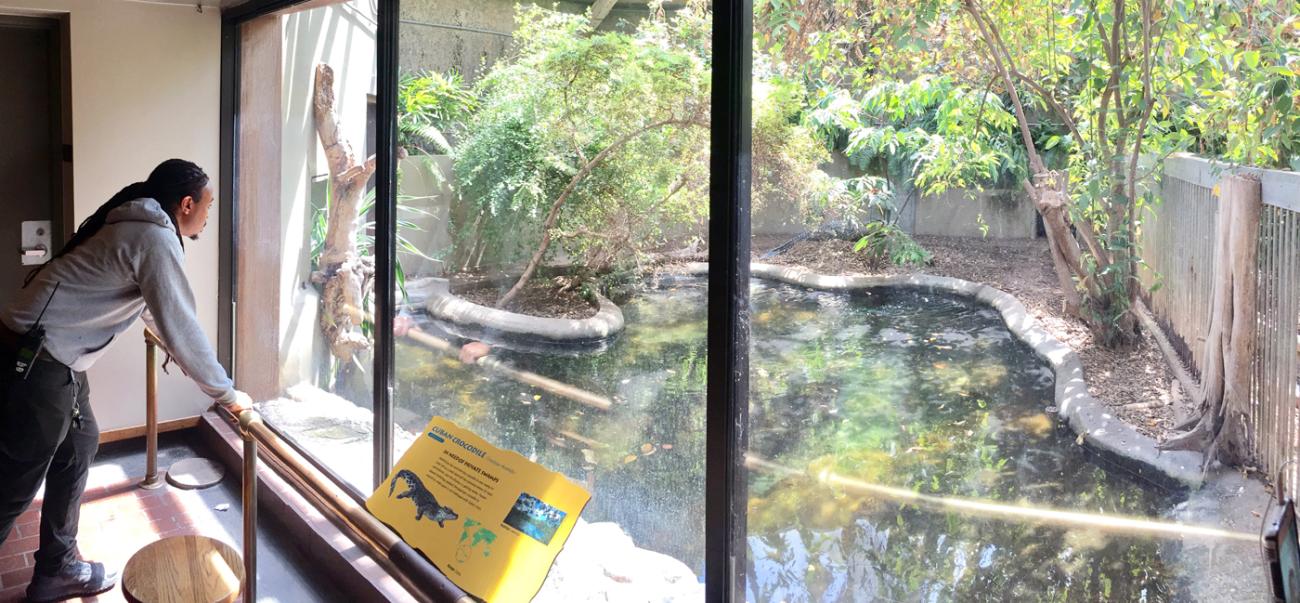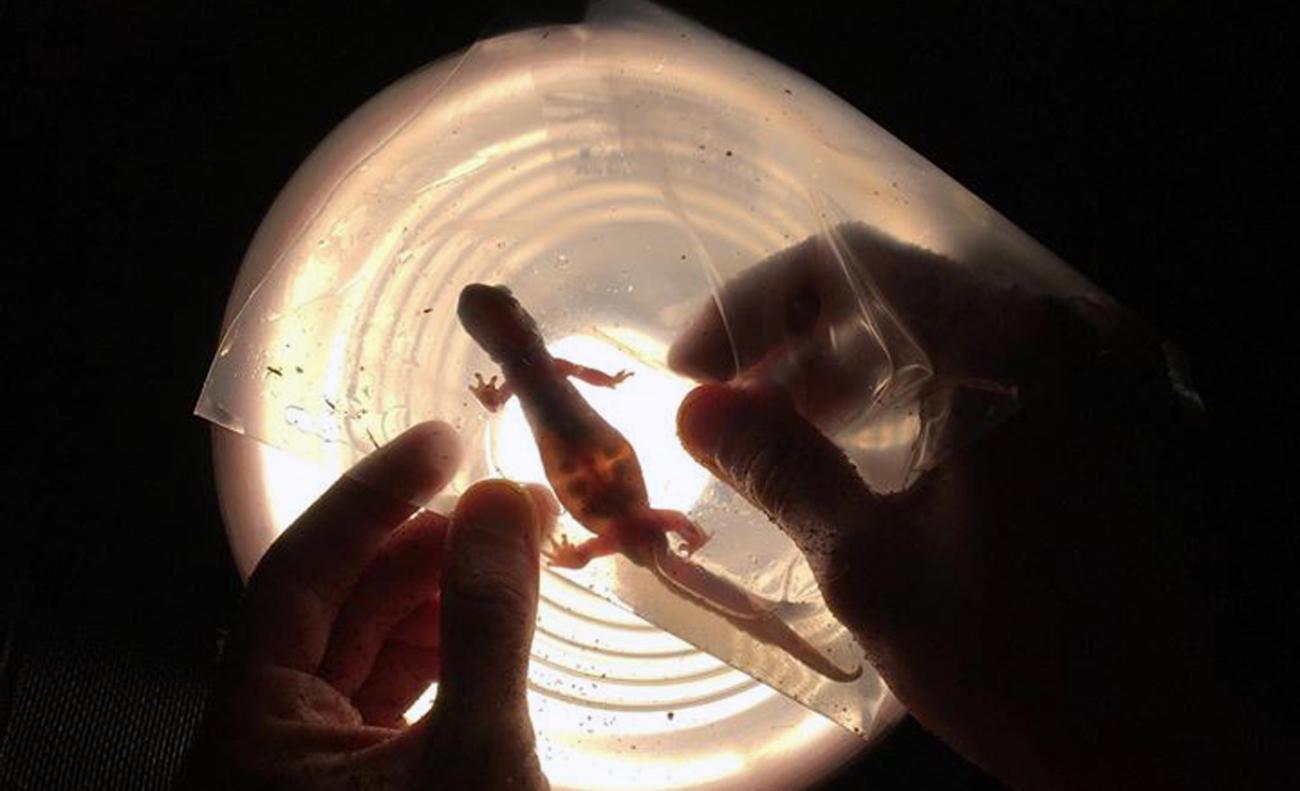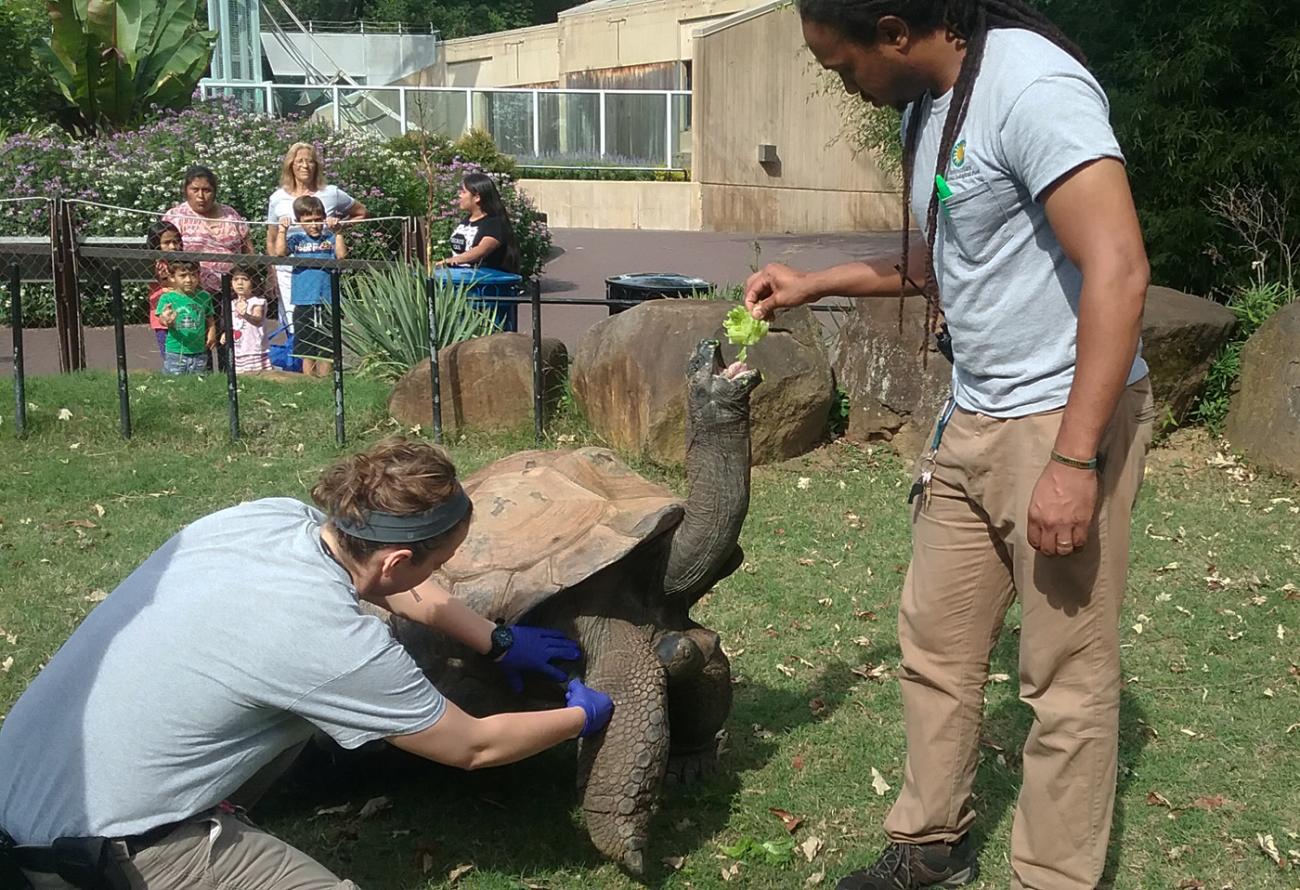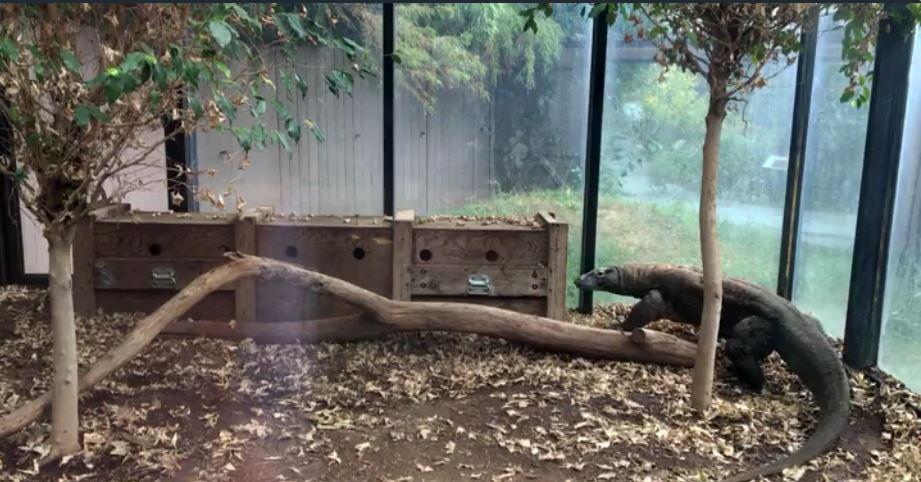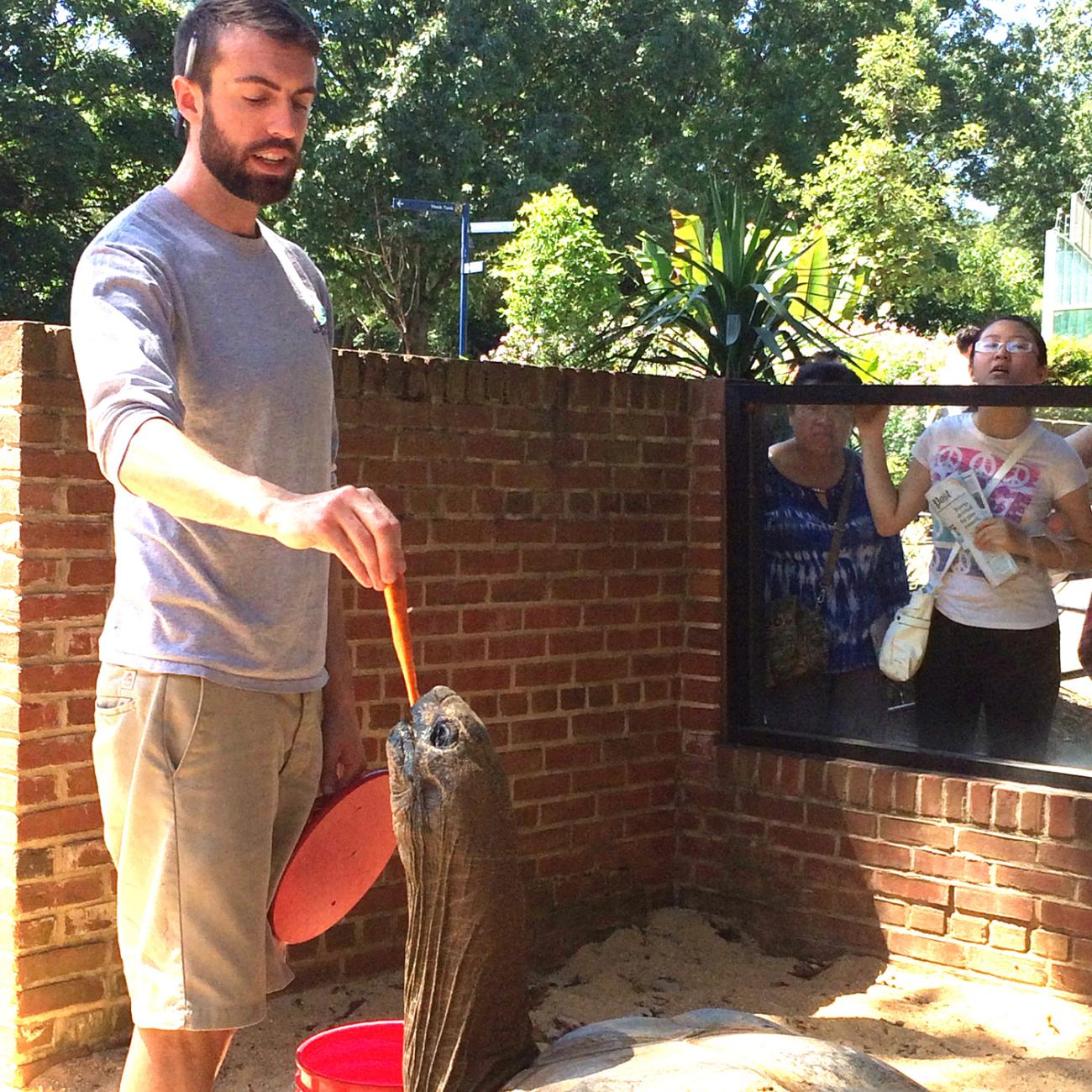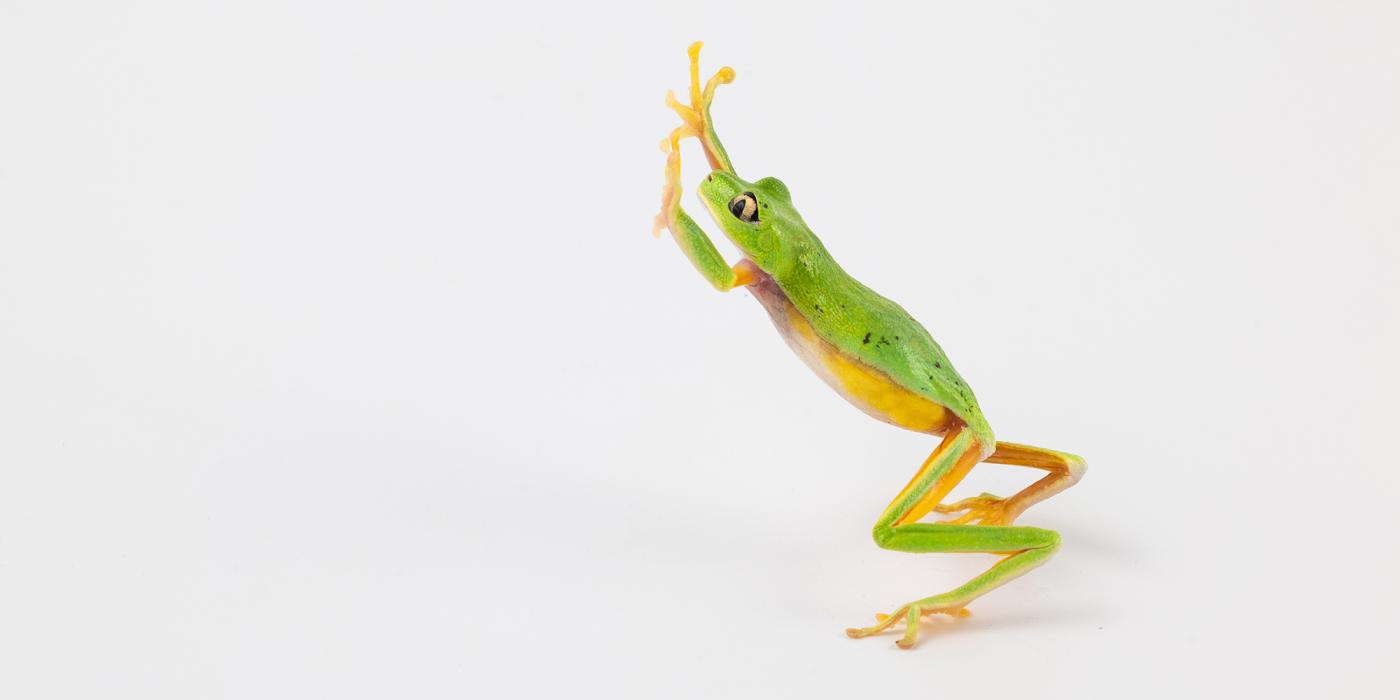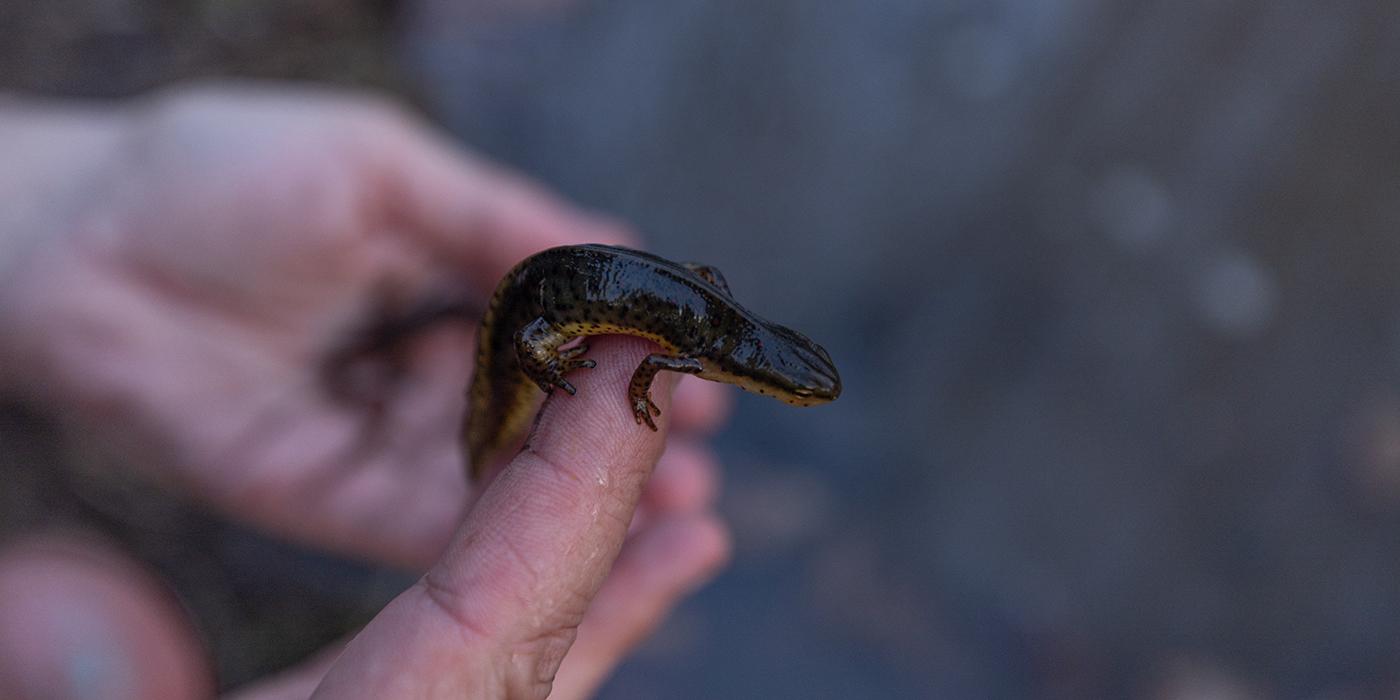A Day in the Life of a Reptile Discovery Center Keeper
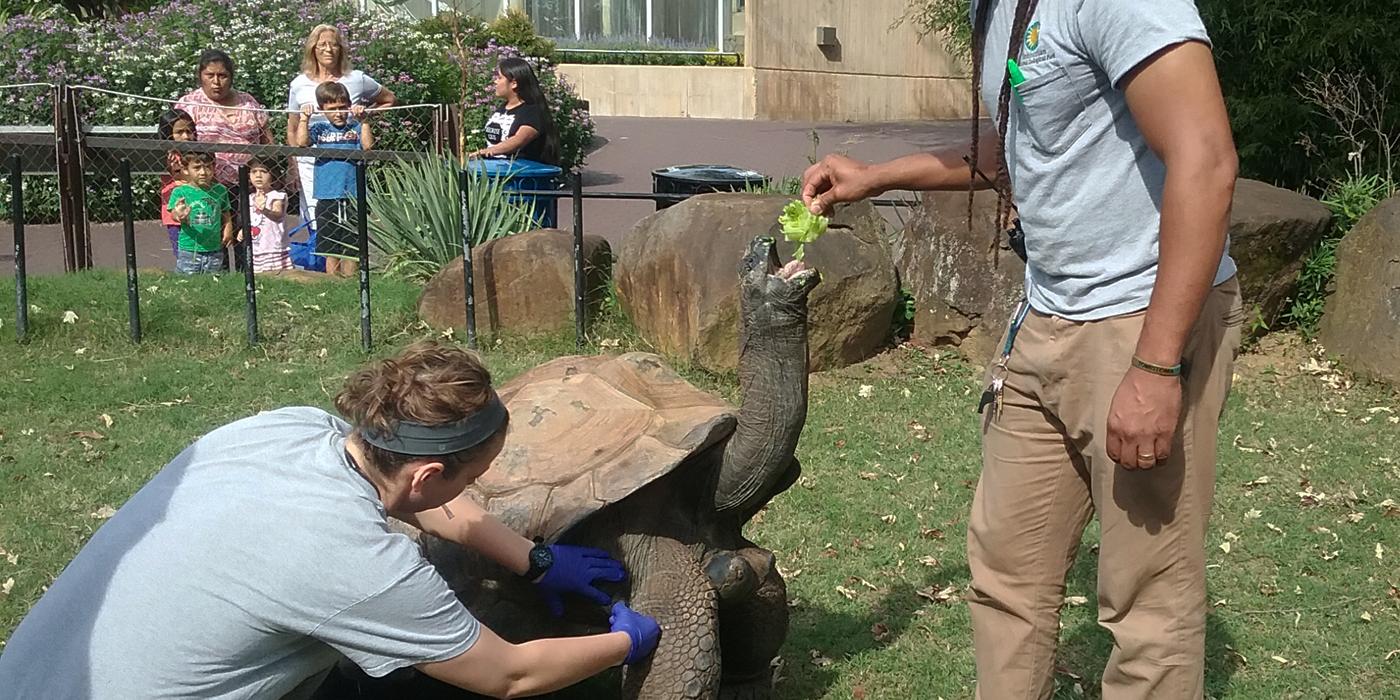
Venture into the Reptile Discovery Center and find more than 70 species, including crocodilians, snakes, lizards, turtles, frogs and salamanders, among others. Follow keepers Kyle Miller and Matt Neff as they train, enrich and care for some of the most charismatic (and dangerous) animals at the Smithsonian’s National Zoo.
Checking for Eggs
“Cuban crocodiles are an especially aggressive species, so we never enter the habitat while the crocs are inside. Instead, we keep an eye on them from afar. In this photo, I’m watching one of our females, Rose, as she build a mound for a nest. One of our fellow keepers, Lauren Augustine, is currently studying egg fertility. In order to collect the Cuban croc eggs safely, we have trained the animals to shift and move into a secure holding area. This year, Rose laid 30 eggs!” – Kyle Miller, animal keeper
Sexing a salamander
“Similar to how we can hold an egg up to a light and view the embryo inside, we can also hold a salamander up to a light to determine its sex. This is a female; if you look closely, you can see the eggs inside of her.” – Matt Neff, animal keeper
Feeding Time
“When it is time to feed our gharial, she snaps her jaws shut so quickly that if you blink, you could miss it! This species has sharp, interlocking teeth and a long, thin snout that’s designed for catching fast-moving fish. We feed her frozen-thawed tilapia and herring, but will move the fish at the end of the pole to encourage her to ‘hunt’ for her meal. When we see a giant splash, we know she caught her prey.” – Kyle Miller, animal keeper
Veterinary Training
“Aldabra tortoises forage by stretching their necks to reach fruits, flowers and leaves perched above. At the Zoo, we use a favorite treat (lettuce) to encourage Rulon to stretch as veterinarians perform health exams, including blood draws. Rulon voluntarily participates in this medical training, making procedures faster and more routine for everyone.” – Kyle Miller, animal keeper
Dragon in a Box
“Our Komodo dragon, Murphy, is trained to enter a crate. We place his regular diet—a frozen-thawed rabbit—at the head of his crate, which encourages him to enter and investigate. His sense of smell is much more acute than his vision or hearing. He collects chemical information on his tongue and touches it to the Jacobson’s organ in his mouth, so he can smell any food that might be nearby. It’s important that he feels comfortable in this crate, as it allows us to obtain routine weights and allow vets to closely examine him and take blood draws without the need for anesthesia.” – Matt Neff, animal keeper
Pine Snakes on a Scale
“One way that we assess the health of our baby animals is by weighing them regularly. The first pine snake hatched April 18, and its sibling hatched April 20. They currently weigh 36.8 grams and 49.3 grams, respectively, which are healthy weights for one-and-a-half-month-old pine snakes.” – Kyle Miller, animal keeper
Husbandry Training
“Our Aldabra tortoises participate in positive reinforcement training. Our male Aldabra tortoises weigh up to 500 pounds, so the only way to move them is for them to move themselves. The male pictured here is Alex. I’m asking him to touch his nose to the target in order to receive a carrot. The tortoises are naturally drawn to the target because its red color resembles ripe fruit.” – Matt Neff, animal keeper.
This story appears in the June 2017 issue of National Zoo News. Learn more about enrichment and training on the Zoo's website.
